Samsung Unpacked 2021 Part 2: Galaxy Z Flip 3 & Z Fold 3 Announced
by Andrei Frumusanu on August 11, 2021 10:00 AM EST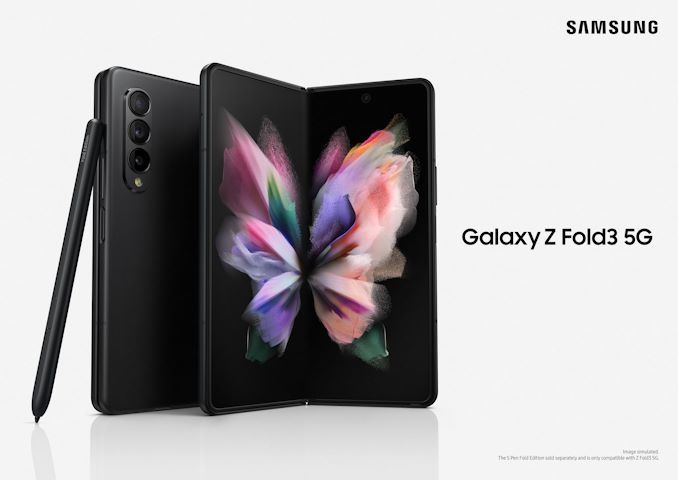
Today Samsung is holding its second Mobile Unpacked event for the year, announcing the new Galaxy Z Flip 3 and the new Galaxy Z Fold 3. It’s a bit of an unusual Unpacked event compared to past years as this time around and for this year we won’t be seeing a new Galaxy Note device.
The new Galaxy Z devices follow as iterations to their predecessors – the original Z Flip announced in February last year and Z Flip 5G later in August, and the Z Fold 2 which was also announced around the same time in 2020.
Both devices are obvious characterised by their folding form-factor designs, which Samsung this year has iterated on, included new hardware internals, and generally just polished their functionality compared to their predecessors. Samsung’s focus towards foldables seems to result as the market generally is finding it hard to differentiate oneself in-between competitors.
| Galaxy Z Phones 2021 | |||
| Galaxy Z Flip 3 | Galaxy Z Fold 3 | ||
| SoC | Qualcomm Snapdragon 888 1x Cortex-X1 @ 2.84GHz 3x Cortex-A78 @ 2.42GHz 4x Cortex-A55 @ 1.80GHz Adreno 660 @ 840MHz |
||
| DRAM | 8GB LPDDR5-6400 | 12GB LPDDR5-6400 | |
| Primary Display | 6.7" AMOLED 2640 x 1080 120Hz Refresh |
7.6" AMOLED Foldable 2208 x 1768 120Hz Refresh |
|
| Secondary Display | 1.9" 260 x 512 |
6.2" AMOLED 2260 x 832 120Hz Refresh |
|
| Size | Height | 166mm (unfolded) | 158.2mm |
| Width | 72.2mm | 67.1mm (folded) 128.1mm (unfolded) |
|
| Depth | 15.9 - 17.1mm (folded) 6.9mm (unfolded) |
14.4 - 16.0mm (folded) 6.4mm (unfolded) |
|
| Weight | 183g | 271g | |
| Battery Capacity | 3300mAh (Typical) 15W |
4400mAh (Typical) 25W |
|
| Wireless Charging | 10W | 10W | |
| Rear Cameras | |||
| Main | 12MP 1.4µm DP PDAF f/1.8 OIS 26.8mm eq. |
12MP 1.8µm DP PDAF f/1.8 OIS 26.8mm eq. |
|
| Telephoto | - |
12MP 1.0µm f/2.4 OIS 51mm eq. |
|
| Extra Telephoto |
- | - | |
| Ultra-Wide | 12MP 1.12µm f/2.2 123° FoV / 13mm eq. |
||
| Extra | - | - | |
| Front Camera | Hold-Punch (Unfolded) 10MP 1.22µm f/2.2 25.7mm eq. |
Under-Display (unfolded) 4MP 2.0µm f/1.8 Hole-Punch (folded) 10MP 1.22µm f/2.2 25.7mm eq. |
|
| Storage | 128 / 256GB UFS 3.1 |
256 / 512GB UFS 3.1 |
|
| I/O | USB-C | ||
| Wireless (local) | 802.11ax (Wifi 6), Bluetooth 5.1 |
802.11ax (Wifi 6E), Bluetooth 5.2 |
|
| Cellular | 4G + 5G NR NSA+SA Sub-6GHz + mmWave | ||
| Special Features | Under-screen fingerprint sensor Stereo speakers It flips |
Under-screen fingerprint sensor Stereo speakers It folds |
|
| Splash, Water, Dust Resistance | IPx8 | IPx8 | |
| Dual-SIM | nano-SIM + eSIM | 2x nano-SIM + eSIM | |
| Launch OS | Android 11 w/ OneUI 3.1 | ||
| Launch Price | 8+128GB: $999 / 1059€ 8+256GB: $ / 1109€ |
12+256GB: $1799 / 1799€ 12+512GB: $ / 1899€ |
|
Starting off with the hardware, the new Galaxy Z devices are now powered by Qualcomm’s new Snapdragon 888 chipset for all global variants of the phones, which should give the phones excellent performance. It’s to be noted that these foldable phones have likely less thermal dissipation capabilities as the more traditional “bar” style devices, so it’ll be interesting to see how Samsung handles the increased power envelope of the new SoC compared to last year’s Snapdragon 865.
The phones come with 8GB of RAM on the Z Flip 3 and 12GB on the Z Fold 3. Storage options for the Flip are 128 or 256GB, while the Fold doubles it to 256GB or 512GB – both UFS 3.1.
The Z Fold 3’s overall design hasn’t changed all that much from the Z Fold 2 – the internal screen is still a 7.6” 2208 x 1768 plastic AMOLED panel with the notable characteristic that it is flexible and foldable. It also continues the 120Hz refresh rate.
The larger change on the panel isn’t in regards to the panel itself but rather to the front camera, which is now using Samsung’s first ever iteration of an under-screen camera design. The camera sits underneath the screen panel and “sees through” the pixel matrix, which is now partially transparent besides for the actual pixel emitters. Samsung here only uses 4MP camera module, but with large 2µm pixels. The pixel density of the area above the camera module does not appear as dense as what we’ve seen presented by Xiaomi on the MIX4, however Samsung is deploying this technology on a foldable panel first so there might be larger differences and technical limitations to the various implementations.
What’s novel on the Fold 3 is the fact that Samsung has now also introduced a digitizer into the panel, allowing it to work alongside the S-Pen. Samsung has also introduced a new S-Pen with a rubber nib and spring pressure mechanism that is much gentler to the plastic screen compared to the traditional S-Pens for glass screens.
On the cover side of the Z Fold 3 we again also see a similar 6.2” display, although this year this panel has gained 120Hz refresh rate capabilities. The camera employed here is of the more traditional hole-punch design.
The overall dimensions of the Z Fold 3 are similar to its predecessor, a 158.2mm device height, and a folded with of 67.1mm that opens up to 128.1mm when unfolded. The device thickness is 6.4mm when unfolded, or 14.4mm when folded. The phone still remains extremely heavy at 271g, but does shave off a few grams compared to its predecessor. Included in that weight is a 4400mAh battery.
Samsung has introduced IPx8 rating for the new Z devices, meaning they’re now water resistant – which is actually quite a feat for a foldable device. Samsung has managed this to employ corrosion resistant mechanical elements in the hinge design, and enforcing water resistant rubber between the electrical elements of the two phone halves.
In terms of cameras, the Z Fold 3 does not appear to change anything in regards to the actual hardware: it’s still a 12MP 1.8µm sensor with f/1.8 as the main module, the same as we’ve seen on the S20 and S21 series. There’s a 2x optical 12MP 1.0µm f/2.4 with OIS telephoto module, and a 12MP 1.12µm ultra-wide with 13mm/123° FoV optics.
The Z Flip 3 differs from the Fold in that it folds in the vertical direction of a more classical flip-phone, rather than horizontally as its larger sibling. Similar to the Z Fold 3, the generational changes this year are rather minor besides the internal hardware upgrade.
In terms of design and the display, it’s again still a 6.7” 2640 x 1080 panel, but this year does gain 120Hz refresh rate.
The secondary small display on the rear of the phone has grown from 1.1” to 1.9” and is of a 260 x 512 resolution now, and in general the whole rear part of the phone here is quite different from the Z Flip 2 as Samsung has rearranged the two rear cameras in a vertical positioning alongside the larger secondary rear display.
Unfortunately, the camera hardware doesn’t seem to have seen upgrades, the main module is still a 12MP 1.4µm f/1.8 module (Galaxy S10 class generation), and the same 12MP 1.12µm specifications on the ultra-wide sensor.
Rather conservative upgrades
In general, this year’s Galaxy Z devices are really only evolutionary upgrades over last year’s options. While the Z Flip 3 has seen what I would call larger differentiation through the larger secondary display and camera rearrangement, the Z Fold 3, beyond the camera island redesign, can also only be really differentiated through the new under-screen inner front camera module.
While the Z Fold 3 remains extremely expensive starting at $1799, the Z Flip 3 starts a lower $999, $200 less than its predecessor, which might open up the phone to a larger potential audience.


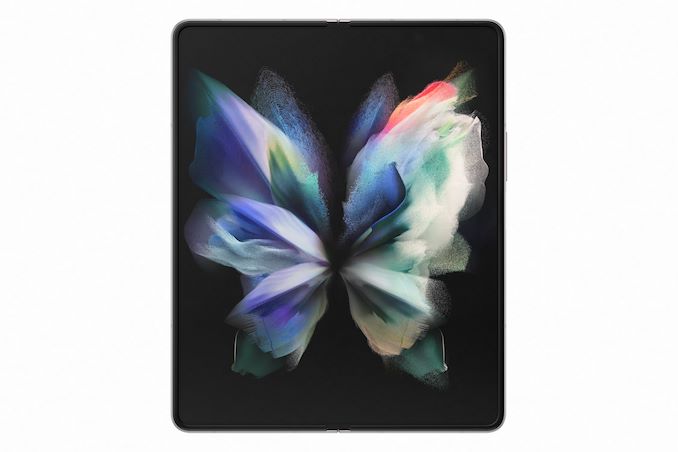

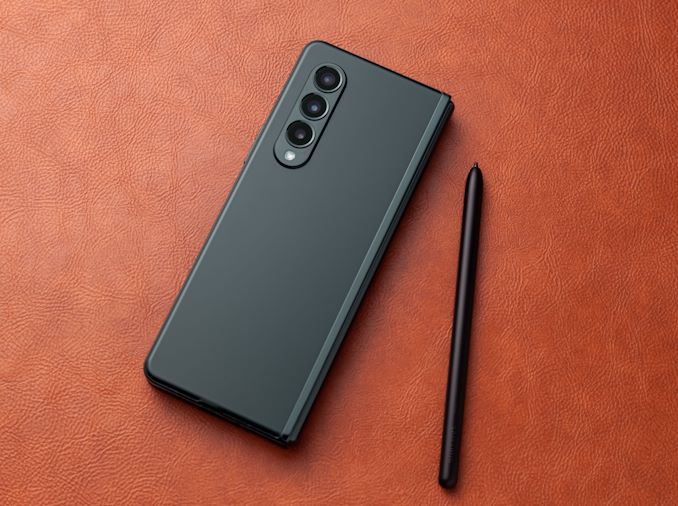
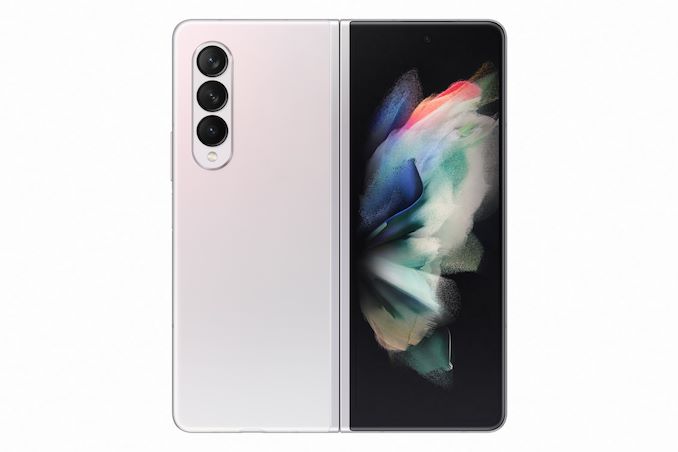
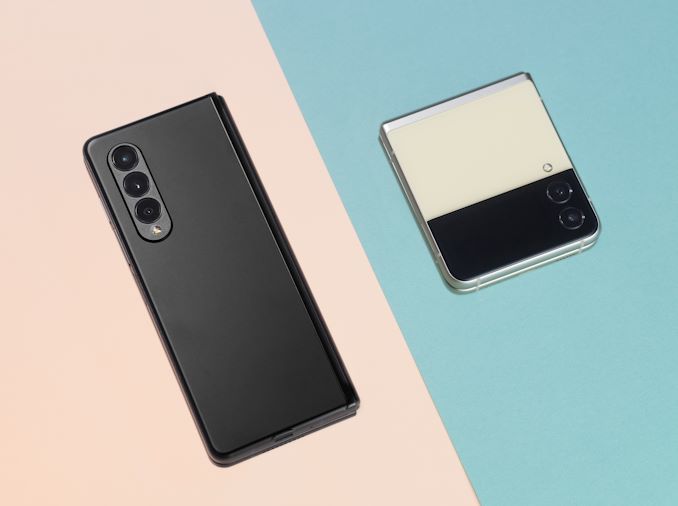
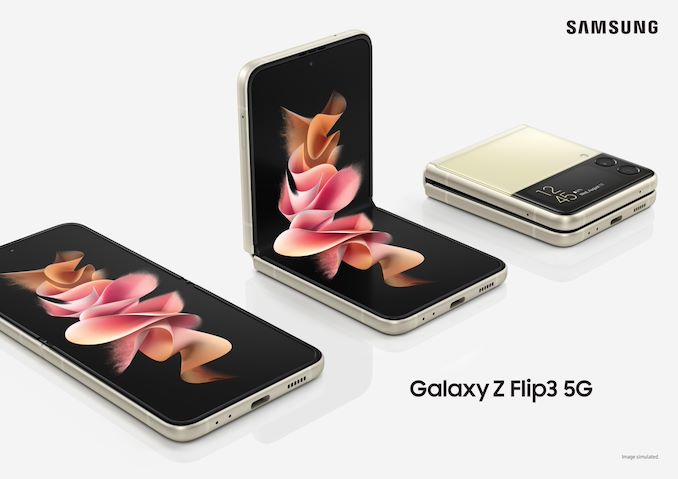
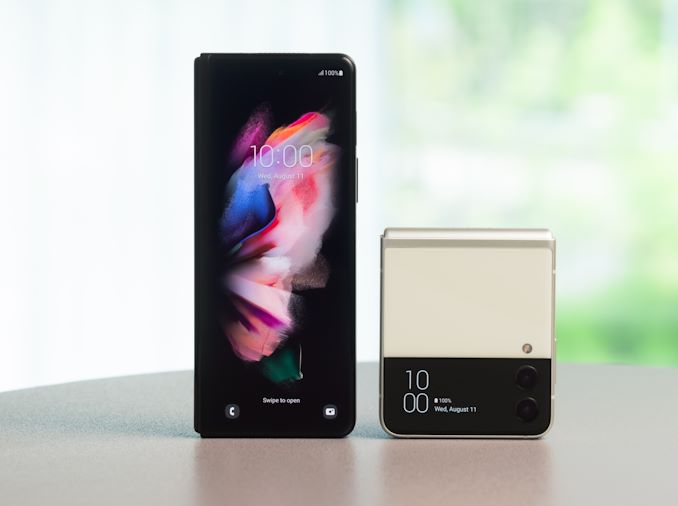
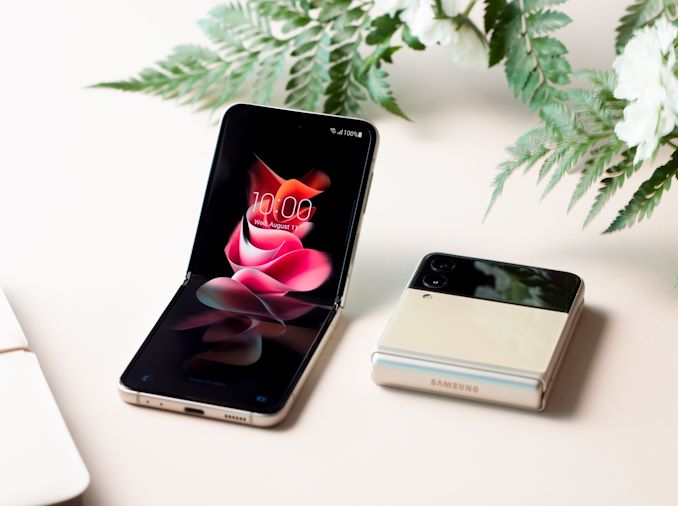
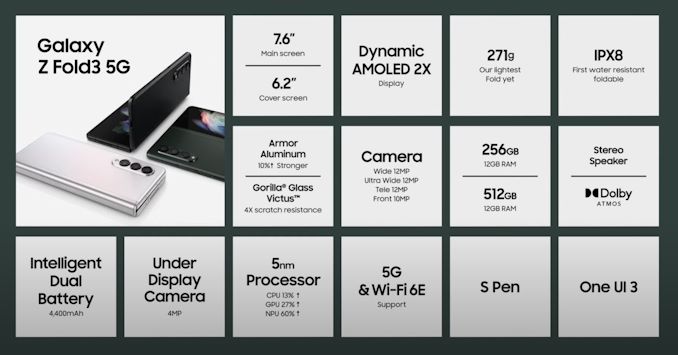
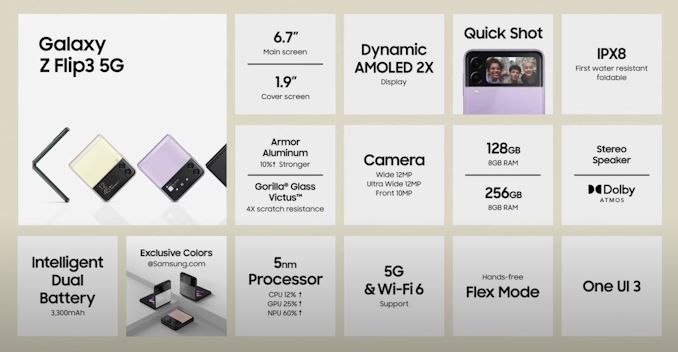








49 Comments
View All Comments
dante216 - Friday, August 13, 2021 - link
It's terrible Samsung plays 3rd fiddle to Apple and Google and can't negotiate dual SIM capability in the USA. Who is negotiating for them?back2future - Saturday, August 14, 2021 - link
Folding endurance is ~200.000 times or seen written 100x a day for at least 5 years?Rapidly folding and unfolding in a testing machine showed ~120.000 folds.
People check their phones around 80-200 times a day (every 5-12min)?
back2future - Saturday, August 14, 2021 - link
(estimations are previous version Galaxy Fold 2)back2future - Saturday, August 14, 2021 - link
(sorry, even wrong, estimations are Galaxy Fold, 2019 version)Tams80 - Thursday, August 19, 2021 - link
Say what you want, but over the last two years I've enjoyed my time with the first Fold, even being able to do some stuff that other devices just wouldn't have been able to do (or at least do well). This mostly seems better.It may well come across as gloating, but I can afford such a device. Many of the negatives people are coming up with seem to be hypothetical and it comes across as them just being jealous that they can't afford one.
You don't need such a device. It's clearly a luxury. So there's no need for the smear attempts.
back2future - Thursday, August 19, 2021 - link
I had to learn, that there is a habits or usage difference between Fold and ordinary mobiles, probably. Maybe You could tell to what percentage You unfold/fold Your mobile on a day and what percentage is watching on backside display only? Thanks.back2future - Thursday, August 19, 2021 - link
Fold is cover display, Flip is backside display (seems this concept confuses me a little)Tams80 - Thursday, August 19, 2021 - link
It's all personal preference.But for me maybe 50:50? And I mainly use the unfolded display as just a big display. That said, when I do want to do multi-app stuff I very much appreciate the bigger display.
For some (most?) people with the 2 and 3, they may well use the front display more as it's bigger. I'm almost perfectly happy with the 1's 'small' one (it's still ultra-wide/long, so...)
back2future - Saturday, August 21, 2021 - link
Thanks for Your experiences.